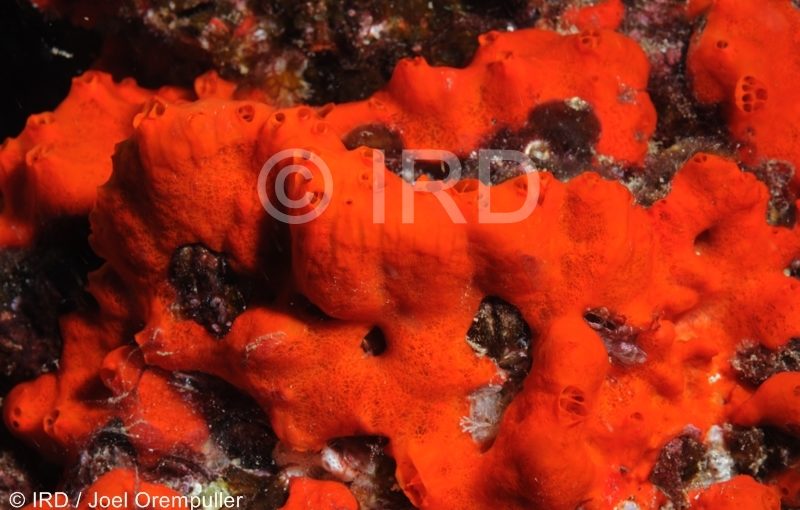External characters
thickly encrusting, anastomosing over substrate, lumpy bulbous surface when alive.
Colour
red in life; beige, with tinges of orange at the apices of bulbs when preserved.
Skeletal Characters
| Oscules | moderately large, typically 5mm diameter when alive but up to 10mm diameter in some parts of the surface; each oscule is surrounded by a prominent membranous lip pigmented the same red colour as the rest of the sponge; oscules are predominantly located along the apex of ridges and bulbous surface lobes; contracted in ethanol. |
| Texture | compressible, dense, not resilient. |
| Surface_Ornamentation | smooth; slightly undulating; ectosome clearly differentiated, but cannot be peeled away; choanosome dense, pliable. |
| Ectosomal_Skeleton | thick, dense cortex of megascleres in paratangential, thick wavy tracts.Tracts surrounding the oscules are perpendicular to the surface, supporting the soft oscular lip. Chelae appear to be restricted to the ectosomal region, particularly immediately subcutaneous, associated with oscules in particular, and near the tips of the projecting tracts of megascleres. |
| Choanosomal_Skeleton | confused, spicules less dense than than in the ectosomal skeleton, reinforced by large fibres; mesohyl light, consistent. |
| Megascleres | subtylostyles with slightly tylote bases and abruptly rounded points, without much obvious taper, shafts slender, predominantly straight but occasionally curved in younger (thinner) spicules; 185-284 um long, 2-5 um shaft diameter. |
| Microscleres | unquiferous anchorate isochelae: reduced with 4 or 5 small alae (teeth), shafts very straight, 20-28 um long. |
| Mudmap_Author | K Hall & J Hooper |
| Mudmap_Editor | Kathryn Hall |
Distribution
In French Polynesia: Marquesas and Gambiers islands
Ecology and habitat
On rocky slope in Marquesas. In the lagoon, on pinnacles in Gambiers.
K Hall & J Hooper (2014). QM4696 Monanchora sp. (OTU QM4696) . In: Hall, K.A. & Hooper, J.N.A. (2014) SpongeMaps: an online community for taxonomy and identification of sponges. (Available at http://www.spongemaps.org).

